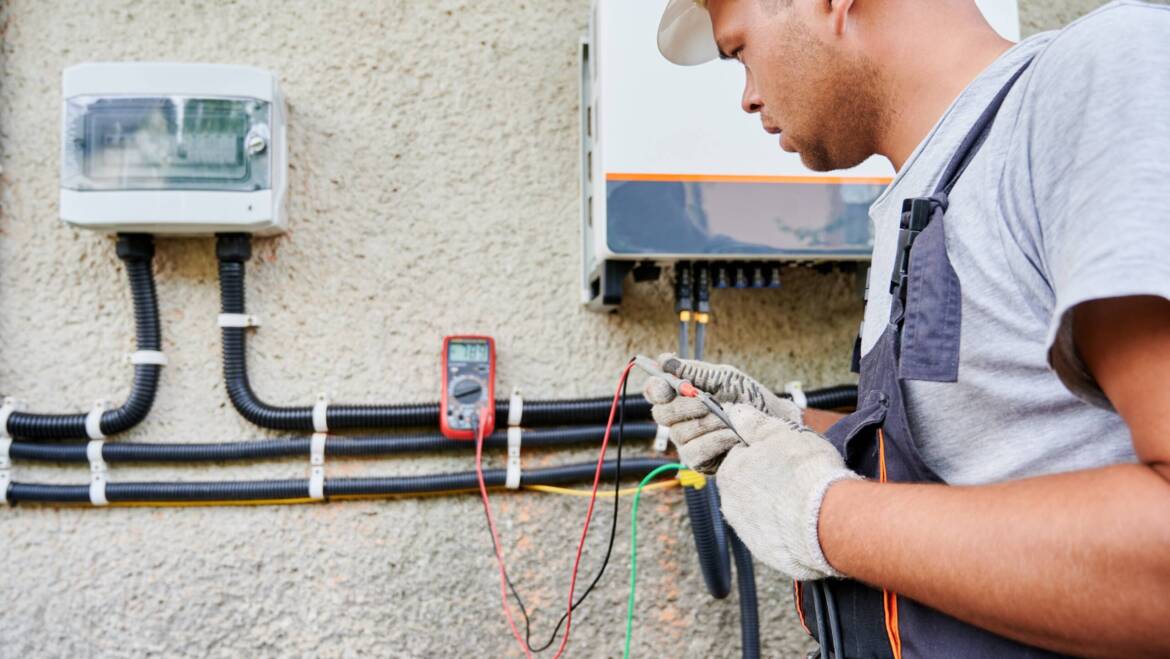Being well prepared ahead of time helps ensure you’re ready when you kick off a backup generator installation project at your house. Proper planning, getting a building permit, having an inspection, and several other to-do’s are all involved in the process.
Just think: What usually happens within hours of a weather event knocking out electrical power? Big-box home retailers will oftentimes sell out their entire stock of portable generators. But if you’ve planned for the worst and purchased a whole house standby generator, you won’t be out of luck like many others.
To get there, heed the following home generator installation steps.
Backup Generator Installation: Location, Codes, and Delivery
Well before your backup generator installation day arrives, make sure you choose a place for the unit that meets local, national, and manufacturer’s codes. This usually means you should situate it a certain distance from your home. Additionally, some homeowners place their generators out of sight and mind from any windows for aesthetic purposes, while others don’t mind or may not have this option.
Make sure you talk to the local building department. You’ll be able to avoid potential problems later if you know what you’re doing. Showing your city or local municipal building department a land survey plat of where you want the unit installed is one of the first steps — and Danley 911 Home Services Electrical can assist. To make sure the location and electrical system are up to code, some communities require a house generator installation inspection.
Make sure you appropriately plan for delivery of the unit before experts begin their work in the morning or afternoon of your backup generator installation. Upon arrival, your installer will place the generator at the entrance of your driveway before transporting it to its final location. Usually, you’re going to be without power for several hours or even an entire day if the installation requires interruption of utility power. Prepare as much as you can.
Proper Permitting for Backup Generator Installation
With the proper help, you’ll need to make sure the right permits are in place and building codes are followed during the backup generator installation process. That’s our job, and we’ll work with you the entire way. Most municipalities require you to get a permit before you can install a standby generator, just like you can’t just put up a fence. Since most of the work is electrical, electrical permits are almost always required.
However, you can’t apply for the permit yourself. Only licensed electrical contractors can apply for generator permits — an important part of installing a backup generator. Help is available to navigate many of these home generator installation steps. Our team has experience with local permitting, codes, and paperwork. Please be patient, because it might take a few days to a few weeks to get the permit. Fees vary from city to city, but usually there’s a small cost.
Depending on the municipality, the processing time can vary for your backup generator installation. Before installation can begin, the permit needs to be in place. We’ll inform you how long each part of the process takes to give you a transparent timeline of how long the entire project will take from start to finish.
HOA Limitations for a Backup Generator Installation
Depending on your locality, you may need to consider any restrictions that your homeowner’s association (HOA) has in place for your backup generator installation. HOAs are popular because they provide bylaws that help manage community assets like landscaping, community pools, and more.
An HOA’s bylaws may also provide reasonable rules concerning home appearance and modifications, which can affect how you install a backup generator. For this reason, it’s important to check your homeowner association guidelines for installing home backup generators or other add-on utility structures. A generator usually falls under the category of “other utility structures.”
Oftentimes, residential generators need approval from an architectural review committee (ARC) in many HOA communities. To hide the generator from sight, guidelines may include installing a screen, fence, or shrubbery. We’ve worked with many HOA guidelines, so homeowners have reliable backup power without violating their rules. Sometimes there’s a rule that you wouldn’t have even imagined. You don’t absolutely know until you check.
An example of HOA rules is as follows: Units must be screened from street views, lake views and adjacent lots with plant materials, walls, or fences. A backup generator installation should never miss your target date to be up and running simply because you didn’t check your HOA policy. Once your installer confirms these HOA rules, they can move forward. This is an area where they can provide helpful assistance and advice.
Usually, an application to the appropriate HOA committee should describe where the generator is located on your lot. This often includes your fencing or screening suggestions. Again, this is just one of the many examples you should consider in your home generator installation steps so you can prepare accordingly.
Site Preparation Before Installation
Your installer will build or prepare a concrete pad or flattened gravel area (called a gravel plat) before your backup generator installation. If digging is necessary, it’s important for the ground to be tamped-down to prevent sinking. Oftentimes, a concrete pad for the generator versus a gravel bed makes installation easier. Additionally, any electrical work and panel material will be prepared, as well as other site preparations.
Depending on the generator’s manufacturer, it may have specific guidelines for proximity to your home, including being a certain distance from your house, shrubs, trees, or anything else that grows nearby. We recommend general short-distance clearance from any structures, overhanging features, or other landscaping material.
A generator pad will keep the unit on level ground. Besides the concrete idea mentioned above, some homeowners choose interlocking stones, flagstones, or other types of bricks and pavers. In many cases, stainless steel bolts ensure everything is secure during your backup generator installation process. Properly fastening it to its base — no matter what kind of base you use — is an essential step to installing a backup generator.
Other Important Items to Remember
Before your backup generator installation, it helps to envision what everything will look like. This includes the outside of your home and the inside to see how it will all work together. Remember an automatic transfer switch is what detects the power outage and starts the generator. If you have a separate breaker panel, the switch may turn off power to all circuits except the ones you’ve chosen to power.
You’ll need to have your natural gas line or propane tank connected to your unit during the backup generator installation process if you’re using natural gas or liquefied propane. You’ll also need the right valves to handle the type of gas you’re using. An expert can help you with all of these safety-and-structural checklist items.
When the technician installs your generator, they’ll test it to make sure it works. They’ll shut off your home’s power so the generator can automatically take over. This is a final test to prove the generator can handle the power load as expected.
Feel free to ask any questions you may have about how the unit works. Before you can use it, a local inspector needs to inspect and approve it. Your installer should schedule this after the process is done.
Maintenance Tips After Your Backup Generator Installation
Startup and maintenance tips should be provided to you by your technician after your backup generator installation is completed, such as the following:
- Start the generator by setting it to “auto” mode.
- It’s recommended that a standby generator performs a brief self-test once a week to ensure everything is working properly.
- If there are no warnings or alarms, verify that the unit ran.
- It is important to keep the terminals of the battery clean and tight.
- Inside and outside the enclosure, ensure the unit is clean and free of debris.
After installing a backup generator, some homeowners have their units serviced regularly by an authorized service dealer.
Danley 911 Home Services Electrical
At Danley 911 Home Services Electrical, we assist you throughout the entire process. We can answer any questions you may have about home backup generator models. Additionally, we can help you prepare for the backup generator installation process, obtain permits, go through inspections, and much more.
We help you optimize and fine-tune your situation, so you get the most out of your investment. Not to mention, we’ll help you determine your correct generator size. Contact us today.
There’s a lot to consider before, during, and after the backup generator installation process. Luckily, you don’t have to do it alone. Let us install your generator for you.

